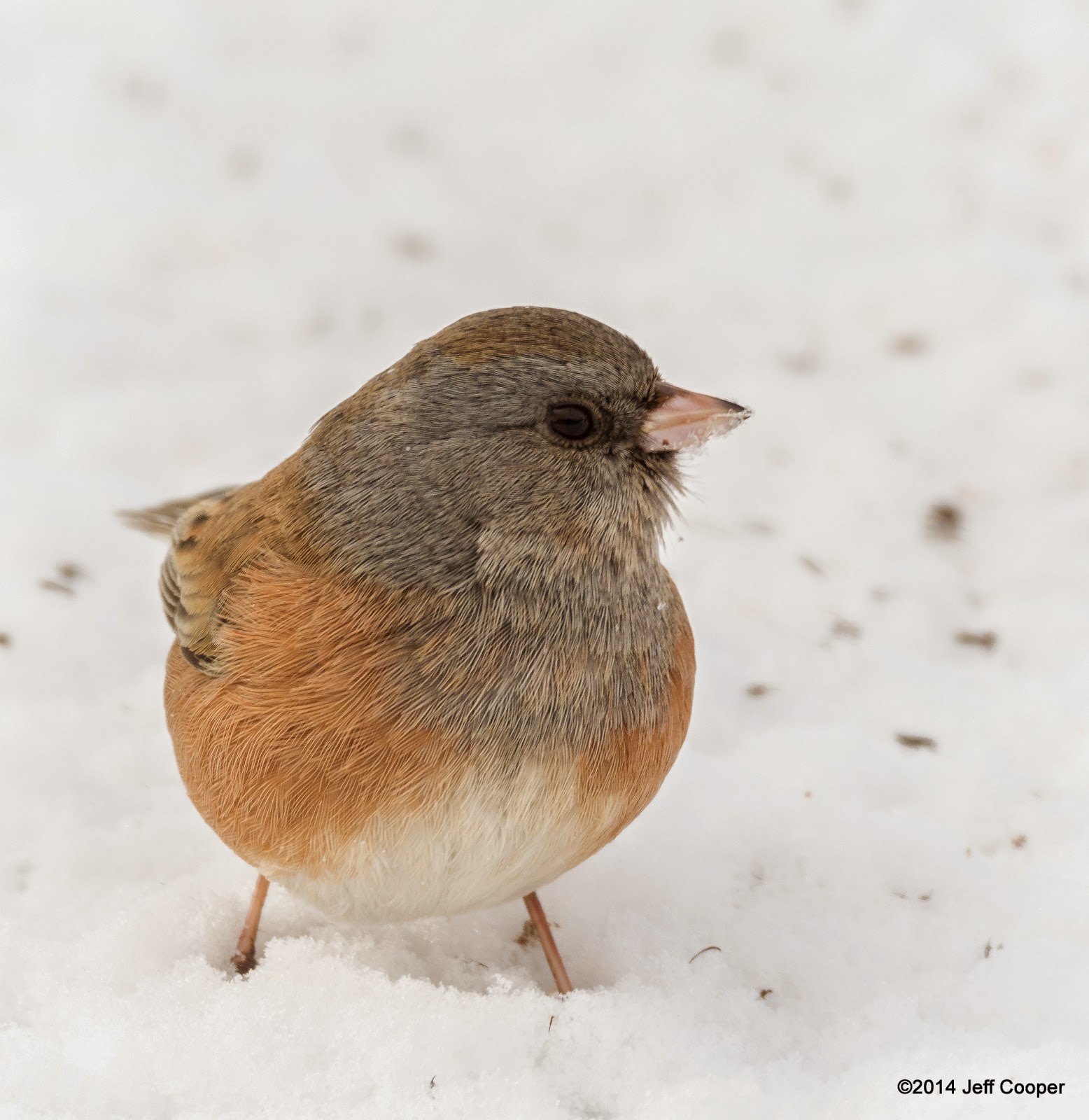I enjoy watching birds visit my backyard feeders during the winter, especially after freshly fallen snow has blanketed the ground and the feeders present easy pickins for hungry birds. Woodpeckers and chickadees like the suet feeder while Lesser and American Goldfinches prefer the sock feeders loaded with thistle seeds. House Finches, House Sparrows, doves, Scrub-jays, and Magpies gravitate toward the feeders with larger seeds and nuts. They tend to take what they want and toss to the ground below what they don't want. Robins and Cedar Waxwings enjoy the fruit of the flowering pear and choke cherry trees around the yard. While most bird species are feeding at the hanging feeders and in the trees there are small birds scurrying around on the ground beneath the feeders. I jokingly refer to them as the bottom feeders, but in truth I find this little group to be quite interesting because they present a bit of a small bird treasure hunt. While they may appear to all be the same at first glance there are subspecies among this group of birds called Dark-eyed Juncos. The subspecies typically seen where I live in northern Utah are primarily Oregon with a dash of Pink-sided. Even less common than Pink-sided is the Slate-colored. Continuing in a much less common direction we sometimes see Cassiar, a subspecies that has the appearance of an Oregon by Slate-colored mix. During one hard winter we actually had a few Gray-headed move down from our mountains to the valleys and our backyard.
Well we got our first snow fall to speak of on Christmas Day so the feeders were swarming with birds the day after Christmas. Looking out the kitchen window I noticed and then became intrigued by the smooth, muted colors of several Pink-sided Juncos. I decided to "step out" into the yard and watch these cute/handsome little birds for a while. I made an attempt to capture the plumage that appeared simple but beautiful. I don't know if the images capture what I so enjoyed with the naked eye, but here's a try.

The Pink-sided population of Dark-eyed Juncos is characterized by a pale hood and dark lores (the area between the eye and the bill). Additionally, their sides are more heavily colored than the more-common Oregon population. Hence the name, Pink-sided.
The next image simply attempts to show the pattern on the top side of a Pink-sided, including the soft brown crown and nape. That is an Oregon in the background with the dark hood.
The lores aren't quite as dark on the bird below, but it is definitely a Pink-sided with the pale hood and broadly colored sides.
Last but not least is a nice looking Junco with some dirty looking feet. These little birds spend a lot of time scratching at the ground to uncover seeds and other food sources. I'll continue my small bird treasure hunt in the wintry days to come and will share what treasures I uncover with diligent observation.








No comments:
Post a Comment